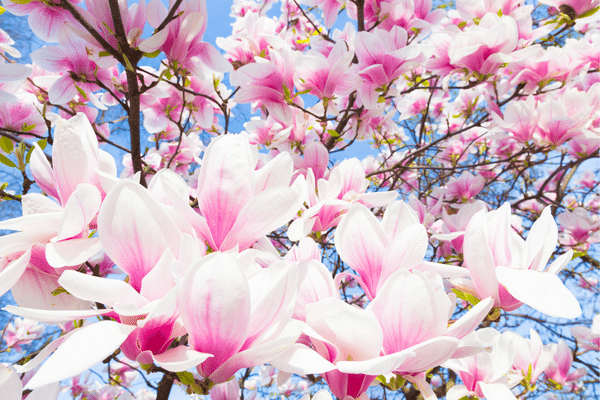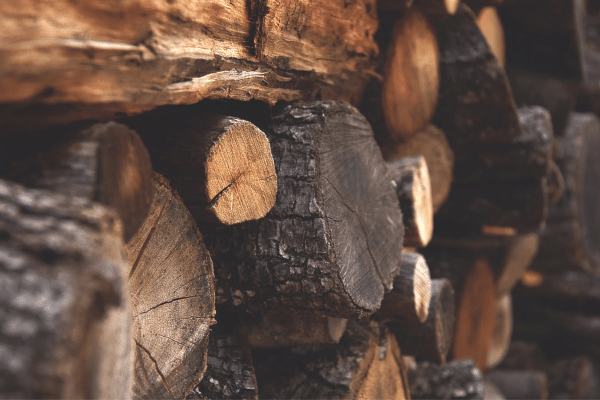- Home
- Types Of Firewood
- Is Magnolia Good Firewood
Is Magnolia Good Firewood?
This post may contain affiliate links so I earn a commission.
You can throw any species of wood into your firepit and burn it, but is magnolia good firewood?
The short answer is, magnolia is a decent firewood to start your fire with, but it burns fast and isn’t great for a prolonged burn.
Magnolia isn’t very dense and will burn up quickly, meaning it doesn’t generate as much heat as you might be looking for.
This can be confusing as magnolia trees are technically a hardwood species.
Not all hardwood is created equal and magnolia is actually pretty soft when it comes to hardwoods.

When you put it up against species like oak, beech, or maple, it won’t measure up.
To learn more, let's look at some of the common magnolia trees you'll use for firewood and determine whether or not they're worth your time.
Common Types Of Magnolia Trees
Magnolias are found all over the country, planted in many areas as an ornamental thanks to their stunningly beautiful white flowers and waxy thick leaves.
While they are native to, and more common in the south, you may run into these in any corner of the country.
The wood from magnolias is commonly used to create beautiful furniture or flooring, as it has an intricate grain pattern that brings a unique look to any project.
One thing to be carefully aware of is what type of magnolia tree you’re potentially about to cut down.
Some magnolias, like Ashe’s magnolia, are illegal to cut down in the US.
The wood doesn’t burn very well anyways, so it’s not worth collecting a hefty fine.
Of the 8 different subspecies of magnolia that you’ll find in the US, three of them are commonly used as firewood.
Each of them has different burning qualities that are worth paying attention to when asking the question, is magnolia good firewood?

Evergreen Magnolia
This species has the highest BTU of all three.
At about 21.3 million BTUs per cord, this tree will give you the most heat out of all other magnolias, but it still isn’t very impressive.
The tree itself, however, is quite impressive.
Their leaves are thick, leathery, and stick around all year long.
The Evergreen magnolia can grow up to 60 feet in height and is a fantastic choice for shade trees that you want to also show off during bloom.
Mountain Magnolia
Also commonly referred to as Fraser magnolia, Mountain magnolia is another subspecies known more for its beauty and fragrance than its firewood qualities.
This tree has a lower BTU than an Evergreen magnolia, so it’s not going to be your first pick.
It’s a tree to go out and enjoy the beautiful flowers of and leave be.
Cucumber Magnolia
Finally, Cucumber magnolias.
This subspecies can grow up to 75-feet tall, 90 in natural habitats, and are often referred to as cucumber trees.
They get their name from their small, unripe fruit that resembles a cucumber.
Cucumber magnolias are deciduous and hold more water than their counterparts, which makes them an even worse choice for use as firewood.
Is Magnolia Good Firewood To Cut And Split?
Here’s where magnolia trees may make you consider using them more often for firewood.
Magnolia cuts and splits smoothly and quite easily due to its low density.
While magnolias are known for cutting easily, it’s important to note their root system.

Their roots are deep and intricately tangled up in the ground, making them difficult to fully remove.
In fact, the root system can weigh up to four times more than the canopy.
Getting it all out is nearly impossible.
That being said, it’s important to remove as much as possible.
The trees will regrow from the stump and can become a quick nuisance when you’re trying to clear the space.
Seasoning Magnolia Firewood
Magnolia dries rather smoothly, with very little warping.
But, it needs a bit more time to fully dry out since it’s less dense than other firewood.
You want to give it the time to get as dry as possible and make it give you as much heat as possible.
Most people will recommend splitting magnolia and letting it season for up to 18 months.
Try and get it chopped up and stacked right away so you have more efficient seasoning.
Is Magnolia Good Firewood To Burn?
Like we’ve said, magnolia can absolutely be burnt but isn’t going to be your first choice for cold weather.
It’s best to use magnolia in the milder seasons when temperatures aren’t dropping low enough that you’re constantly standing at the wood stove.
Magnolia is going to burn hot and fast.

Since it isn’t dense, it doesn’t have very good coaling qualities.
Rather, the wood will burn quickly and turn to clean white ash.
That’s why magnolia is a better fit for use as a starter wood or being mixed in with other hardwoods.
While it isn’t going to be the best for long burns, magnolia has a low resin content, burns with little smoke, and very little creosote build-up.
That makes it a great choice for starting fires as we’ve all been partial to smoke-filled living rooms when using a high-smoke starter wood.
Magnolia compares easily with other woods like poplar, alder, or white birch.
Quick and fast with a burst of heat that won’t last long.
In general, if you’re getting rid of a magnolia tree that you have on your property, it’s well worth using it to burn through.
It isn’t worth going out and finding a magnolia to bring home and work hard for.
The work you put out should come back in the warmth you get from burning the wood.
To make that even, don’t try very hard to get your hands on magnolia wood, but if it’s there you may as well throw it on the fire.


